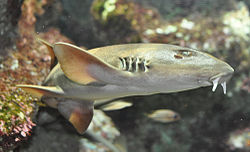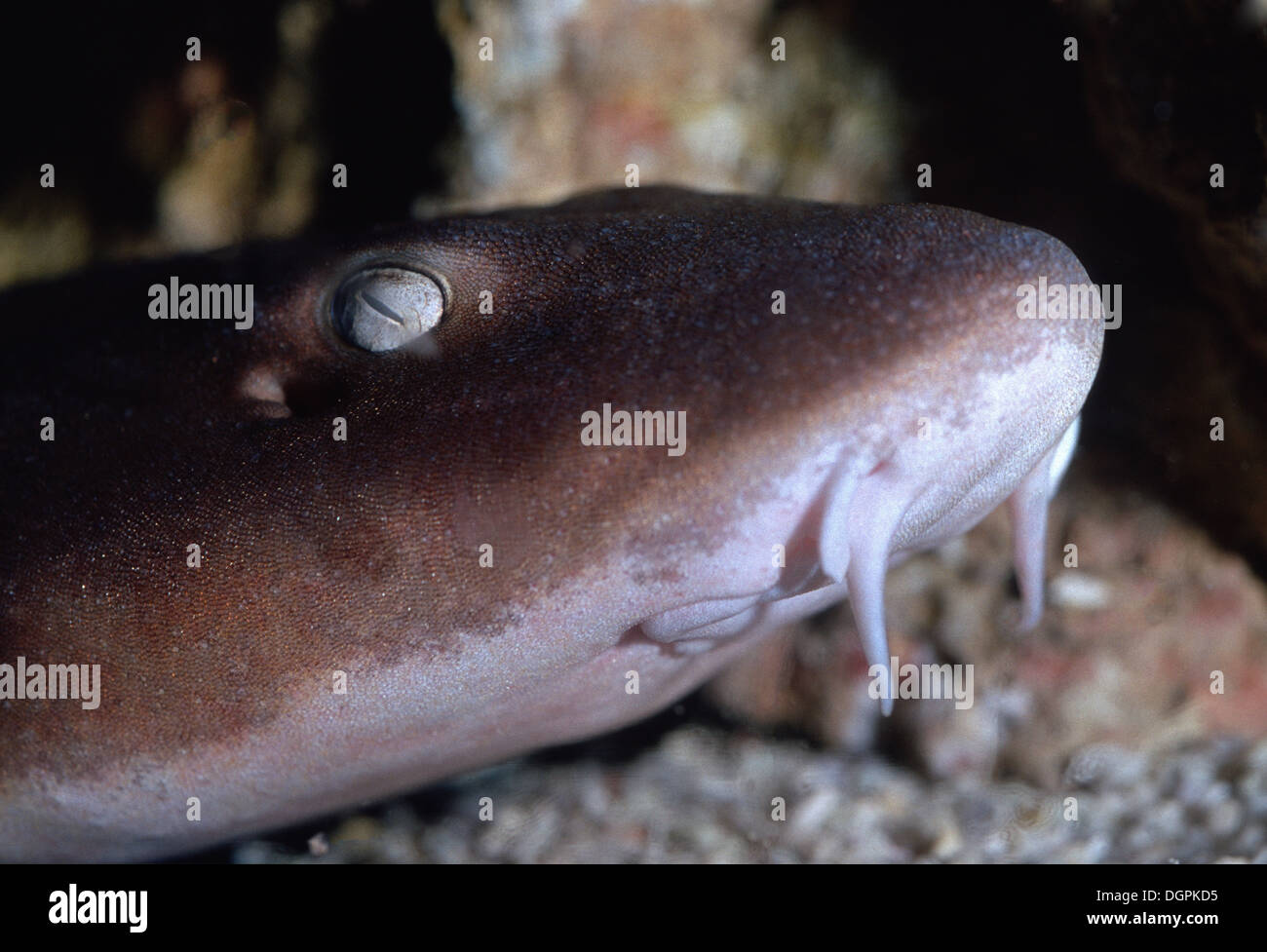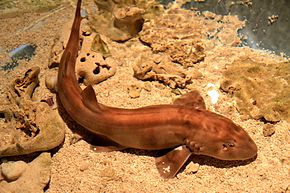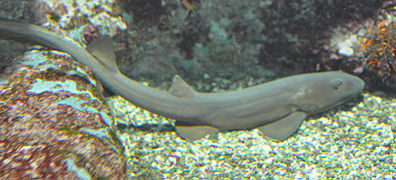Hemiscylliidae#Chiloscyllium
Brownbanded bambooshark ( Chiloscyllium punctatum )
Chiloscyllium is a genus within the real sharks and the family of bamboo sharks. It currently contains seven species that occur on the coasts of Indopazifiks exclusively.
Features
In all species of the genus are small and very slender, elongated species. Can be reached as the closely related Epaulettenhaie ( Hemiscyllium ) has a maximum body length of about 80 to 105 centimeters, but most species remain significantly smaller with an average of 50 to 60 centimeters. The largest species of the genus is the braungebänderte bambooshark with a maximum of 105 centimeters. The coloring may vary and is usually light brown, some species also show a striking camouflage markings of saddles, transverse bands and spots, but occurs in most species only in the pups.
The mouth is well ahead of the eyes, such as all kinds of Ammenhaiartigen they have 5 gill slits. The body bottom is flattened in for demersal shark species typically. The two dorsal fins are very far behind, the first dorsal fin arises in all types behind or above the pelvic fins, the anal fin is always well behind the second dorsal fin.
Dissemination
The distribution of seven species rests solely on the shores of Indopazifiks. The main distribution area of the genus lies in the coastal area of India along the coast of Asia to Southeast Asia as well as in the Indonesian islands. Individual species can to Madagascar, occur in the Persian Gulf and on the north coast of Australia.
All species live in shallow coastal water, especially in coral reefs. Individual species probably also occur in brackish water in the range of river mouths and headwaters. The depth range ranges from direct beach area up to a maximum of about 100 meters.
Way of life
Over the life of the species are very little information, a lot of information comes from various species in aquarium maintenance. Some of them are nocturnal and hide during the day in Riffspalten. They are probably all kinds oviparous ( oviparous ) and they feed on small fish and invertebrates. The Weißgepunktete bambooshark one of the few species of sharks, in which an asexual reproduction has been demonstrated.
System
The genus consists of seven species Chiloscyllium and together with the Epaulettenhaien ( Hemiscyllium ) the family of bamboo or lip shark ( Hemiscylliidae ) within the Ammenhaiartigen ( Orectolobiformes ).
The seven types are the following types
- Arab bambooshark ( Chiloscyllium arabic ( Gubanov in Gubanov & Shleib, 1980) )
- Burmese bambooshark ( Chiloscyllium burmensis ( Dingerkus & Defino, 1983) )
- Gray bambooshark ( Chiloscyllium griseum ( Müller & Henle, 1838) )
- Indonesian bambooshark ( Chiloscyllium hasselti ( Bleeker, 1852) )
- Slim bambooshark ( Chiloscyllium indicum ( Gmelin, 1789) )
- Whitespotted bambooshark ( Chiloscyllium plagiosum ( Anonymous [ Bennett ], 1830) )
- Brownbanded bambooshark ( Chiloscyllium punctatum ( Müller & Henle, 1838) )
The population of the Weißgepunkteten Bambushais in the coastal region of Madagascar is often presented as a separate species and described as Blaugepunkteter bambooshark (C. caerulopunctatum ).
Endangering
All kinds of Chiloscyllium be conducted in the Red List of the International Union for Conservation of Nature ( IUCN) due to high fishing pressure and a strong change in their habitats in particular by the destruction of coral reefs as species of Vorwarnlisten ( " near threatened "). An exception is the Burmese bambooshark, of which no sufficient data for classification exist ( "Data deficient" ).










